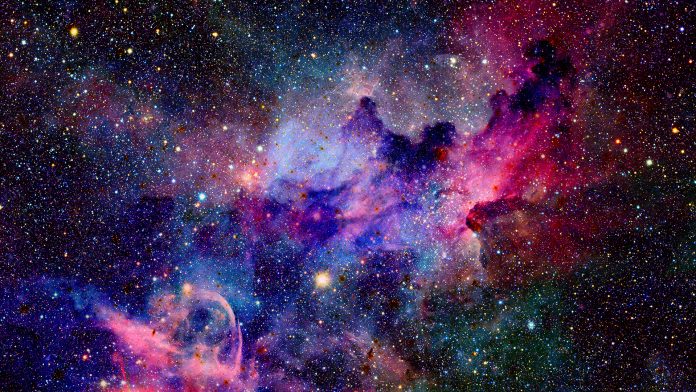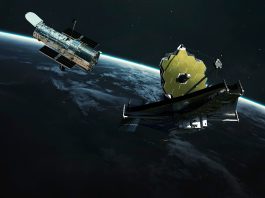Researchers are combining observations from the Hubble and James Webb telescopes to better understand the expansion of the Universe.
When tackling one of cosmology’s most complex riddles, meticulous attention to detail is paramount. Such is the case with the ‘Hubble Tension,’ a conundrum arising from the disparity between the observed rate of the Universe’s expansion and predictions derived from earlier missions like ESA’s Planck.
This inconsistency prompts questions about the accuracy of measurements and the potential influence of unseen phenomena.
For over three decades, NASA’s Hubble Space Telescope has served as a reliable tool for measuring the rate of the expansion of the Universe.
However, lingering doubts about measurement accuracy prompted a collaborative effort with NASA’s James Webb Space Telescope. Together, they aimed to provide definitive answers and address uncertainties regarding the observed expansion rate.
Initial findings from the Webb telescope in 2023 provided crucial validation for Hubble’s measurements.
Nevertheless, concerns persisted about potential errors emerging with deeper observations. To address these concerns, the SH0ES (Supernova H0 for the Equation of State of Dark Energy) team, led by physicist Adam Riess, conducted additional observations using Webb, focusing on critical cosmic mileposts known as Cepheid variable stars.
Developing the cosmic distance ladder
By cross-referencing Cepheid variable star data with Hubble’s measurements, the team was able to confirm the accuracy of the cosmic distance ladder‘s foundational rungs.
Astronomers employ a variety of methods to gauge distances across the Universe, adapting their techniques to suit the specific characteristics of the celestial objects under scrutiny.
These diverse approaches collectively form what is known as the cosmic distance ladder, where each step builds upon the preceding one for precise calibration.
However, concerns arise as astronomers contemplate ascending the ‘second rung’ of this ladder. They speculate that the reliability of Cepheid measurements may diminish with increasing distance, potentially introducing instability into the ladder’s accuracy.
This potential discrepancy stems from the blending of light emitted by Cepheid variables with that of neighbouring stars, a phenomenon exacerbated by the crowding of stars as distances lengthen.
The challenge intensifies when examining past Hubble images of distant Cepheid variables, where the stars appear increasingly clustered and intertwined with adjacent stellar bodies.
Enhancing accuracy with the James Webb Space Telescope
This phenomenon necessitates meticulous adjustments to account for such visual clutter, particularly as intervening dust clouds obscure clarity in visible light measurements.
Fortunately, the James Webb Space Telescope circumvents these obstacles by operating in the infrared spectrum, providing sharper resolution and effectively isolating Cepheids from their neighbouring stars amidst dusty environments.
Riess explained: “Combining Webb and Hubble gives us the best of both worlds. We find that the Hubble measurements remain reliable as we climb farther along the cosmic distance ladder.”
The latest observations from the Webb telescope encompass five host galaxies housing eight Type Ia supernovae and a grand total of 1,000 Cepheids.
These observations extend to NGC 5468, the farthest galaxy where Cepheids have been measured, situated at a staggering distance of 130 million light-years.
Co-author Gagandeep Anand of the Space Telescope Science Institute in Baltimore added: “This spans the full range where we made measurements with Hubble. So, we’ve gone to the end of the second rung of the cosmic distance ladder.”
Hubble and Webb’s confirmation of the Hubble Tension will enable other observatories, such as Nancy Grace Roman Space Telescope and ESA’s Euclid observatory, to investigate the Universe’s expansion further, offering a clearer picture of cosmic evolution.









